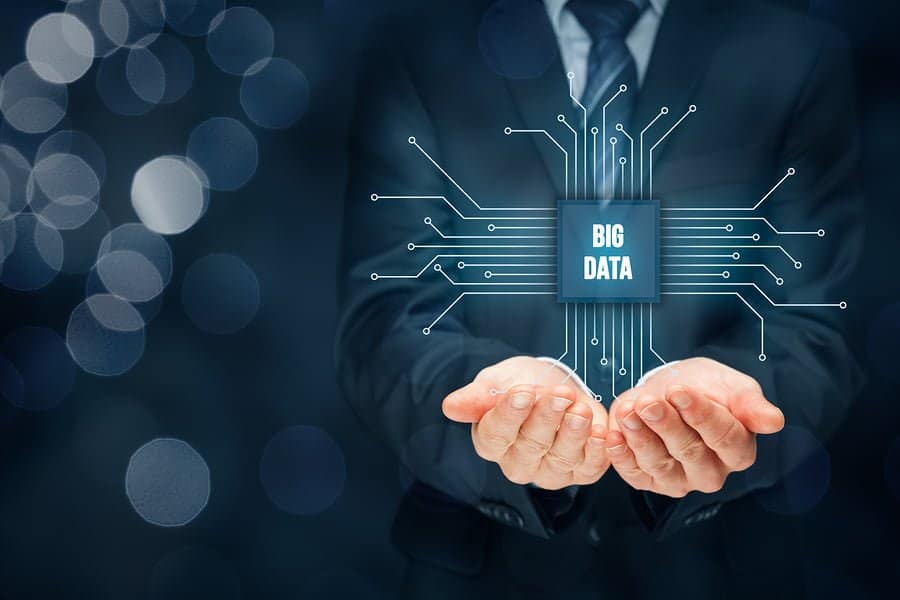It wasn’t so long ago that big data was the sole reserve of big businesses – massive, global corporations with equally big budgets. Only these organizations could afford the otherwise prohibitively expensive technology, skilled data scientists and channels needed to collect, store, analyze and draw insights from vast, vast quantities of data.
Today, however, the scope of big data has broadened, and business enterprises both large and small rely on big data for intelligent business insights. Big data has indeed evolved at an incredibly fast pace over recent years, particularly since the proliferation of cloud computing. The cloud has eliminated the need for organizations to deploy expensive and elaborate setups in-house – since all the information they need can be remotely accessed via an internet connection – meaning even small businesses are now able to take advantage of big data.
Data has become one of the most valuable assets to businesses. And, as more and more of those businesses become data-driven, the demand for big data services has risen in unison. However, the challenge remains for enterprises of all sizes to extract actionable insights from the ceaseless streams of data they now have access to, and thereby capitalize on the opportunities they present for business growth.
Let’s take a look at some big data trends, and consider what might be in store to propel companies into the future.
- More Companies Will Be Looking to Leverage IoT Data
The Internet of Things (IoT) craze is only set to keep growing through 2019 and beyond. To put some figures on it, the IoT market is expected to grow significantly from $1.2 trillion in 2017 to $6.5 trillion in 2024, at a compound annual growth rate (CAGR) of 26.6% from 2018 to 2024, according to figures from Energias Market Research.
This growth is being driven by factors such as the falling costs of things like smart sensors, as well as the increasing demand for automated technologies and smart devices. It is now becoming more and more common for consumers to be controlling their home appliances from their smartphones, and of course smart speakers – Amazon Alexa, Google Home, etc. – are also growing in prominence.
These devices are all generating customer data – data which can be tracked for patterns, trends, buyer behaviors, etc., etc., etc. It’s a fair prediction that in 2019, more companies around the globe will be investing in IoT technology development. This means there will more new devices that are more capable of collecting valuable customer data, and more solutions emerging to manage, process and analyze it.
- Edge Computing Will Grow in Prominence
Due to the growing IoT trend, a need has been created for technological innovations designed to cut down on lag time from the gathering of data from connected devices into the cloud, the data’s analysis, and the action that needs to be taken as a result. Naturally, it’s far more efficient to process data where it’s collected – and this is where edge computing comes in.
Edge computing extends the cloud out to the “edge” of the network – that is, closer to consumers and their connected devices that rely on cloud services. With edge computing, data gets processed as close to the source as possible, instead of being sent many miles away to a massive, centralized, datacenter – a process which takes up time and bandwidth. The main idea is that smart devices don’t have to be limited to collecting data and sending it to the cloud for analysis – rather, they can analyze it themselves. Or, if not the actual devices, small nodes at the edge of the cloud serving as intermediaries between the end-point devices and the giant data centers at the cloud’s heart.
Edge computing delivers better performance due to the fact there is less data flowing in and out of the network – and this also results in reduced cloud computing costs. What’s more, edge computing can speed up data analysis, giving companies more time to react to it. Things like autonomous cars where reduced latency is essential will benefit hugely from advances in edge computing – a self-driving car simply cannot wait around for the cloud to process information and return results, as even a millisecond delay could be fatal.
The concept of edge computing is of course not brand new, but, due to the fact that it is able to vastly reduce the data load currently handled by centralized data centers, it is highly likely that we will see and hear more about the possibilities of edge computing in 2019.
- The Year for Quantum Computing?
Analyzing and interpreting ever-larger volumes of data is going to be a struggle with existing technologies. The fact of the matter is that more and more data is generated as each day ticks by – and with even more still expected to be generated from IoT, business opportunities are going to waste while we wait for technology to catch up.
If there was only a way to crunch billions of data simultaneously in just a few minutes – or even a few seconds – businesses could cut processing time immensely, make more timely decisions, and achieve better business results.
Well, such an undertaking might only be possible through quantum computing, and many major tech giants – including Google, IBM and Microsoft – are in a race to create this next generation of supercomputers. Quantum computers are able to store and process far greater quantities of information than classical computers. And they can do so using less energy. Rather than store information using bits represented by 0s or 1s like classical computers do, quantum computers use quantum bits – qubits – to encode the information as 0s, 1s, or both at the same time in what’s known as a superposition state. When multiple qubits act coherently, they can process multiple options simultaneously, allowing them to process information in a fraction of the time it would take even the fastest non-quantum system.
The truth is we’ve got many years ahead of us yet before quantum computing becomes an everyday reality that companies of all sizes will be able to take advantage of f. Nonetheless, it is expected that 2019 will see the first ever proven example of “quantum supremacy” – i.e. a case where a quantum computer will be able to perform a task beyond the capabilities of any classical computer. This will be a massive milestone reached, paving the way for an exciting new decade in data computing ahead.
- A Big Year for Open Source Solutions
2019 will likely be a year where we will see more free software and open source big data tools become available in the cloud. These will hugely benefit small organizations and startups in particular, who will be able to utilize these free tools and gain immense benefits from big data technology.
Many of the solutions currently available – such as Apache Hadoop, Apache Storm and Apache Cassandra – have been making considerable improvements in recent times to speed up data processing, and now include features that allow access and response to data in real time. As such, we can predict that they will be in high demand throughout 2019.
- More Chief Data Officers
Gartner predicts that 90% of large global companies will have a chief data officer (CDO) by 2019. Now that data is becoming an essential part of ongoing business strategies, more and more organizations will have a dedicated C-suite executive – a CDO – who will be solely accountable for driving a culture of analytics at all business levels.
While business intelligence and analytics have generally fallen under the remit of the chief information officer (CIO), now that the race is on for companies to obtain a competitive edge on the big data battlefield, the need for a dedicated CDO emerges. What’s more, with the CDO position filled, CIOs will be freed up to focus more on IT architecture, infrastructure and security.
In 2019, CDOs will be more common, and will be expected to take an increasingly active position in steering their organization in the right direction. They will be in charge of not only data governance, data quality control, and master data management, but of creating an information strategy with relevant metrics that tie the activities of the organization to measurable business outcomes.
Final Thoughts
Big data may be getting bigger, but we are only at the very beginning of exploring and capitalizing on the potential business benefits that it brings. The trends and predictions outlined above should become increasingly apparent as we press through 2019. But for companies to benefit from them, they must fully understand how the new advancements can be used to achieve their own particular business goals. In short, big data isn’t just a buzzword. It’s here to stay, and the relevant technologies are evolving all the time. Organizations need to be not only aware of the latest trends, but planning how they can jump on the back of them if they are to remain competitive over the coming twelve months and the years beyond.




